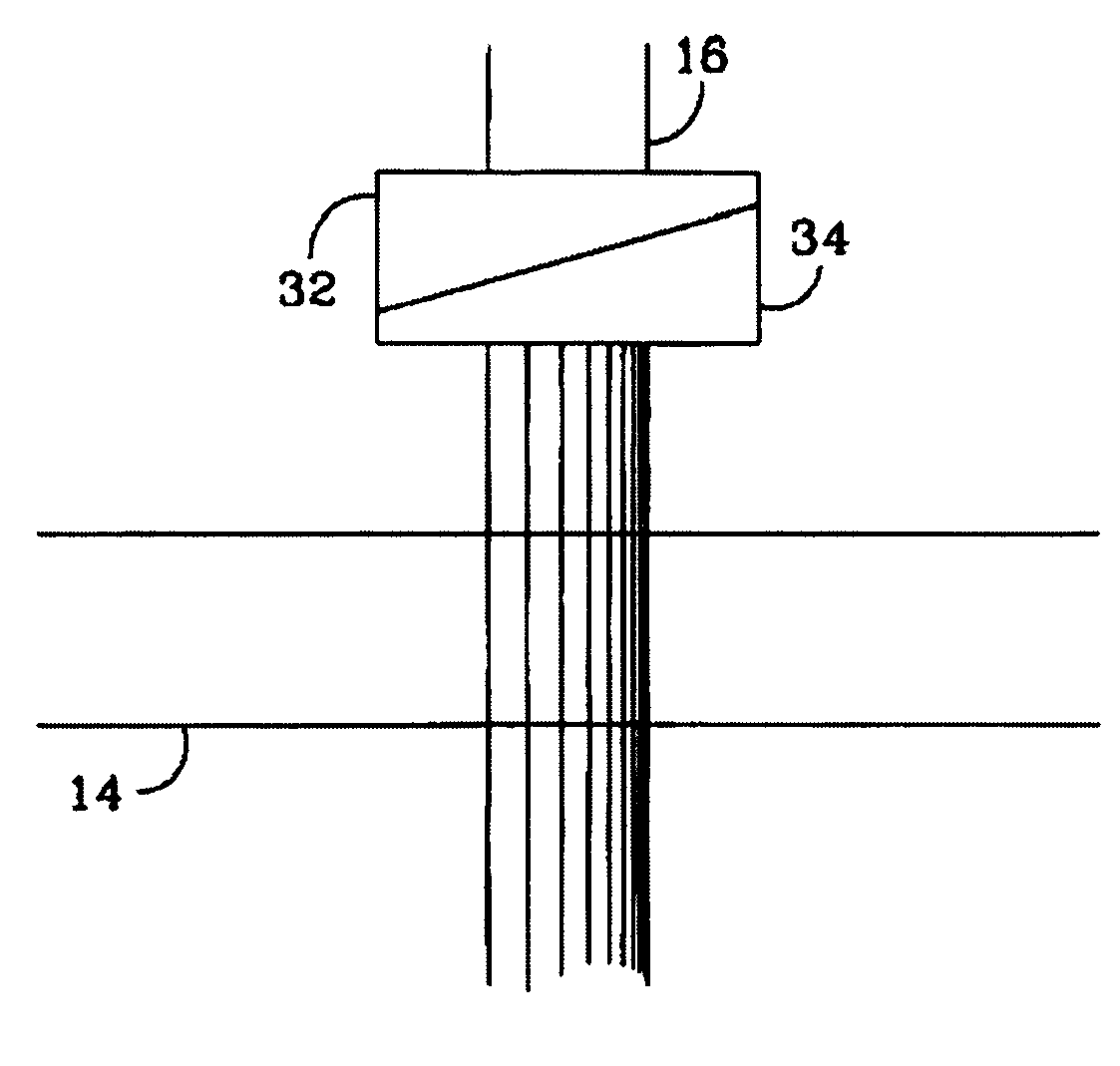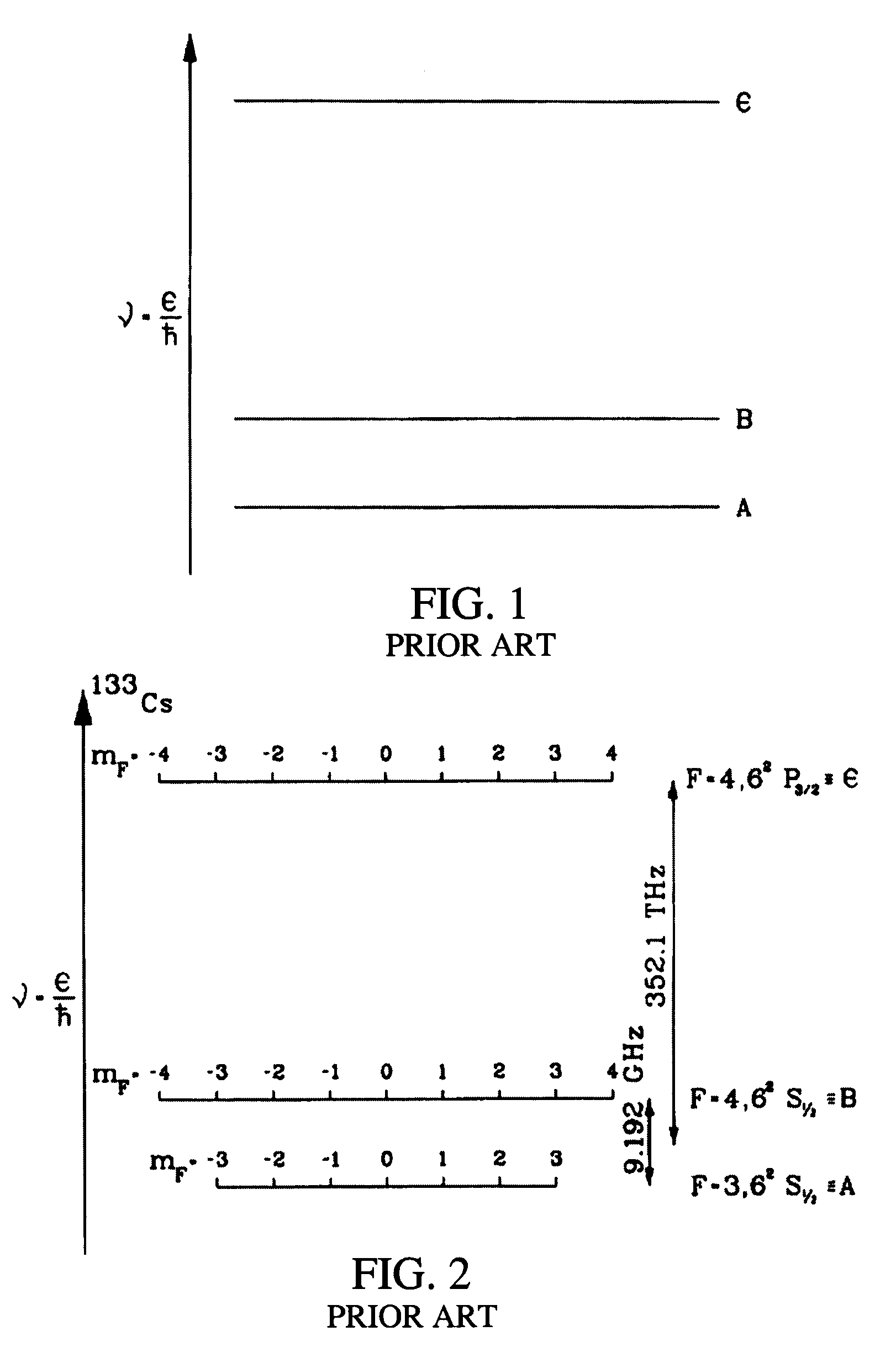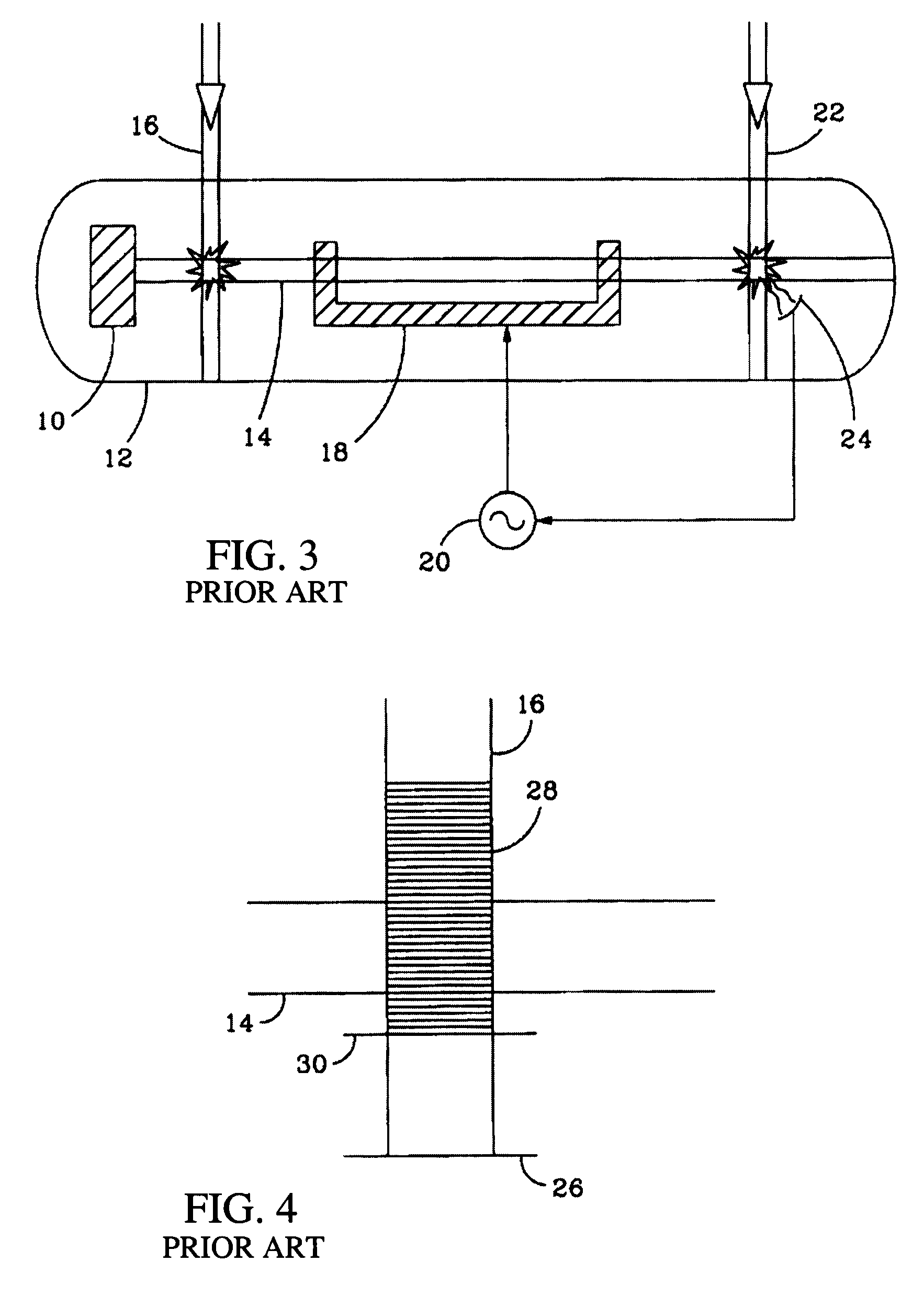Optical pumping device and method
a pumping device and optical technology, applied in the direction of lasers, time interval measurement, automatic control of pulses, etc., can solve the problems of atomic signal-to-noise ratio, atomic resonator performance is adverse, and the solution, although effective, proves difficult and complex to apply, so as to achieve the effect of suppressing the black state and destroying the black state more effectively
- Summary
- Abstract
- Description
- Claims
- Application Information
AI Technical Summary
Benefits of technology
Problems solved by technology
Method used
Image
Examples
Embodiment Construction
[0024]FIG. 5 schematically illustrates the area for preparing the atomic jet in an enlarged view. The beam 16 crosses the atomic jet 14 in order to perform optical pumping. A birefringent plate 32, for example in crystalline quartz, with non-parallel faces, is inserted on the path of the beam 16, upstream from the atomic jet 14. The orientation of the optical axis of the plate 32 relatively to the polarization of the incident beam 16 is such that it creates a maximum of ellipticity of the output polarization, ideally of 45° between the axis of the incident linear polarization and the principle axes of the birefringent plate. The phase gradient accumulated by the incident plane wave 16 due to the change in thickness of the plate 32, combined with the ellipticity of the polarization due to the double refractive index of the birefringent plate 32, produces a polarization gradient of the light beam transverse to the direction of propagation of the light beam 16. Further, the orientation...
PUM
 Login to View More
Login to View More Abstract
Description
Claims
Application Information
 Login to View More
Login to View More - R&D
- Intellectual Property
- Life Sciences
- Materials
- Tech Scout
- Unparalleled Data Quality
- Higher Quality Content
- 60% Fewer Hallucinations
Browse by: Latest US Patents, China's latest patents, Technical Efficacy Thesaurus, Application Domain, Technology Topic, Popular Technical Reports.
© 2025 PatSnap. All rights reserved.Legal|Privacy policy|Modern Slavery Act Transparency Statement|Sitemap|About US| Contact US: help@patsnap.com



